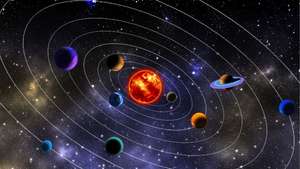
Basics of Gravity: A 101 Guide
Gravity, the force that keeps our feet on the ground and governs the motion of celestial bodies, is a fundamental concept in physics. From the apple falling from the tree to the orbits of planets around the sun, gravity shapes our understanding of the universe. In this 101 guide, we'll explore the basics of gravity, unraveling the mysteries of this force that holds the cosmos together.

What is Gravity?
At its core, gravity is the force of attraction between two masses. The larger the masses and the closer they are to each other, the stronger the gravitational force. Sir Isaac Newton, in the 17th century, was the first to formulate the laws of gravity, providing a mathematical framework to understand how objects interacted with one another through this force.
- Newton's Law of Universal Gravitation:
\[ F = \dfrac{G \cdot m_1 \cdot m_2}{r^2} \]
In this equation:
- \( F \) is the gravitational force between two objects.
- \( G \) is the gravitational constant.
- \( m_1 \) and \( m_2 \) are the masses of the two objects.
- \( r \) is the separation between the centers of the two masses.
Understanding the Equation
- Inverse Square Law: The most critical aspect of the equation is the inverse square relationship between force and distance. As the distance between two masses increases, the gravitational force diminishes rapidly.
- Proportional to Mass: The force is directly proportional to the product of the masses. This means that more massive objects exert a stronger gravitational pull on each other.
- Gravitational Constant (G): G is a constant that ensures the units on both sides of the equation match. It is a fundamental constant of nature, approximately equal to \(6.674 \times 10^{-11} \, \text{N} \cdot \text{m}^2/\text{kg}^2\).
Applying Gravity on Earth
1. Weight vs. Mass:
- Mass: The amount of matter in an object, measured in kilograms.
- Weight: The force of gravity acting on an object's mass, measured in newtons (\(N\)).
- On Earth, an object's weight can be calculated using the formula: \( \text{Weight} = \text{mass} \times \text{acceleration due to gravity} \).
2. Acceleration Due to Gravity (g):
- On Earth, the standard value for the acceleration due to gravity is approximately \(9.8 \, \text{m/s}^2\).
- This means that every second, an object in free fall on Earth's surface will increase its velocity by \(9.8 \, \text{m/s}\).
Gravity Beyond Earth: Orbits and Beyond
1. Orbital Motion:
- Satellites, including the moon, remain in orbit due to a delicate balance between their forward velocity and the gravitational pull of the celestial body around which they orbit.
- The concept of escape velocity is crucial here. For an object to break free from a celestial body's gravitational pull, it needs to achieve a specific velocity known as escape velocity.
2. Gravitational Interactions in the Cosmos:
- Gravity governs the movement of planets around the sun, moons around planets, and stars within galaxies.
- The orbits of celestial bodies are a delicate dance between their inertia and the gravitational force pulling them toward the center of mass.
Einstein's General Theory of Relativity
While Newton's laws of gravity provide an excellent description for most everyday situations, Albert Einstein's General Theory of Relativity, formulated in the early 20th century, offers a more comprehensive understanding of gravity. According to Einstein, gravity is not just a force between masses but a curvature of spacetime caused by the presence of mass and energy.

Key Concepts of General Relativity:
1. Spacetime Curvature:
- Massive objects, like planets and stars, create a curvature in the fabric of spacetime.
- Objects in free fall follow curved paths dictated by this curvature.
2. Time Dilation:
- Gravity also affects the flow of time. In stronger gravitational fields, time passes more slowly than in weaker fields.
- This phenomenon, known as time dilation, has been experimentally confirmed and is a critical aspect of GPS systems.
3. Gravitational Waves:
- According to general relativity, accelerating masses should produce ripples in spacetime known as gravitational waves.
- These waves were first detected in 2015, opening a new era in observational astronomy.
Gravity, the force that binds the cosmos together, is a concept that has fascinated scientists and thinkers for centuries. From Newton's classical laws to Einstein's revolutionary insights, our understanding of gravity has evolved, enriching our perception of the universe. As we continue to explore the cosmos and unlock its mysteries, gravity remains a fundamental force shaping the very fabric of spacetime and influencing the motion of celestial bodies in ways both grand and subtle.




